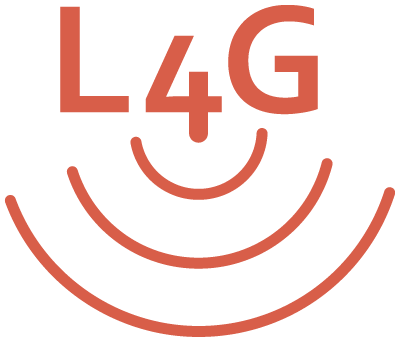How To Respond to Client Feedback | Listen4Good

Importance of Responding to Client Feedback
Listen4Good’s approach, created specifically for the social sector, includes a five-step process to help organizations collect feedback so that they can create meaningful, lasting change with the clients they serve.
How to respond to different types of feedback
Feedback can come in many forms, but for the sake of simplicity, we’re going to address positive, negative, and neutral feedback here, and how you can respond to each in constructive ways.
How to respond to positive feedback
Positive feedback tends to be everyone’s favorite kind, and for good reason. It makes us feel good and appreciated. In a world that sometimes feels inundated with negative reviews, positive feedback can appear to be a rare gem.
That said, even when it is positive, it can’t be taken for granted. When you receive positive feedback, it’s still important to respond to your clients to let them know that they were heard and their feedback is valued.
One caveat here: be conscious of the potential for courtesy bias when receiving positive feedback. Courtesy bias is when a client provides positive feedback out of politeness, even if they have had a negative experience. While we won’t go into courtesy bias right now, if you’re curious, you can read more about it here.
Express gratitude
When you receive positive feedback, be sure to thank your client. By doing so, you express your respect for your client. You are expressing your appreciation for the time they took to share their positive experience with you.
Reinforce the positive
Be sure to reinforce the positive feedback you received when you respond. It will create goodwill and also help the client remember what they liked best in their experience with your organization.
It’s important to also share the positive feedback with staff members. Especially at social sector organizations, staff will appreciate knowing their efforts are making a difference.
Mention additional services
You may have additional or related services that dovetail on this client’s positive experience. If it makes sense, mention those complementary services as a way to create more connections and value for your clients so that you can be of additional service to them.
Positive feedback response example
Positive feedback helps to reinforce strong practices and service delivery, and when it is shared with others in your organization, it can provide benefits.
At Maternal and Family Health Services, the organization asked new mothers how they felt about their visiting nurse. Shannon Heyward, Vice President of Service Delivery Operations, said,. “I’ve never heard the word ‘love’ mentioned so much in a survey. The open-ended question, ‘Why do you stay involved with [us]?’ had multiple responses about how the clients love their nurse.”
As this feedback was received during the pandemic, and nurses had felt discouraged about the quality of their interactions due to virtual visits instead of in-home visits, this positive feedback boosted staff morale among nurses considerably.
How to respond to negative feedback
Many organizations feel wary of negative feedback and staff individually can feel apprehensive about receiving it.
Here at Listen4Good, we welcome negative feedback! We see it as a great opportunity for learning and growth. In fact, once nonprofits go through the Listen4Good process, they actually look forward to receiving negative feedback.
Negative feedback also presents the opportunity to engage with your clients at a new level. Clients are often pleasantly surprised when an organization welcomes negative feedback and responds thoughtfully to it. This process opens the door to building long-term trust and partnership.
Thank the client
When you receive negative feedback, you’ll first want to thank your client for taking the time to share it. If they took the time to give it to you, then it is only fitting that you would want to take the time to respond to them so that they know that someone heard them and is considering what they had to say, even if it was critical.
Express concern
Regardless of how the negative feedback is posed, be sure to express concern and caring when you respond. Reinforce that you are taking it seriously and appreciate them bringing it up. Before you share a response with the client, review your response for empathy, and if necessary, have a colleague review it before you share it.
Restate the negative feedback
Be sure to acknowledge and restate the negative feedback so that the client knows you understood what they were communicating with you and that you did not misunderstand or misinterpret their meaning.
Take responsibility
If your organization was at fault or made bad assumptions, own what happened and take responsibility for the consequences . Your clients will respect you for it. One of the main reasons to gather feedback is to address blind spots we may have in crafting programs. Clients see and experience things practitioners don’t and can alert you to areas where things are not working as you had assumed or planned.
Offer solutions to the negative feedback
Not all negative feedback has a solution, but if a solution does exist, be sure to identify it. If the problem was resolved as a result of your client’s negative feedback, you’ll want to be sure to let them know that their feedback helped to solve or call attention to a problem that needed addressing, and that you are appreciative of their help.
Negative feedback response example
Negative feedback can yield valuable information on areas that an organization needs to bolster. At AYA Youth Collective, when youth were asked about ways the organization could improve, they requested more support and resources to obtain stable housing. Thanks to this feedback, the organization decided to implement a second feedback loop to determine how they could quickly and effectively respond to this need. .
How to respond to neutral feedback
Neutral feedback presents a unique challenge, as it may not provide much information at all. It may be tempting to overlook it, but since it is not positive, it is worth examining to uncover the candid opinion that may be hiding beneath the surface. So what should you do with neutral feedback?
Thank the client
Again, as with other types of feedback, be sure to thank your client for taking the time to provide feedback, even if it is neutral. They took the time to give it, so take your time to acknowledge it.
Ask questions
When you receive neutral feedback, it may not seem that informative at first glance. Consider asking your client additional questions to probe and see if the client can provide deeper or more specific feedback. This will help you understand why they may have been unhappy but reluctant to provide more detail. Their answers may reveal how their experience fell short of being a positive one. It’s also helpful to ask them what it would take for them to become a promoter or provide more positive feedback. Turning a passive participant to an endorser can be a powerful conversion!
Neutral feedback response example
An example of a neutral feedback response could be a rating of three out of five stars on a survey. Or it could be generic, qualitative feedback that says, “Everything was fine.” In both of these cases, the client may not have indicated a negative experience, but the lack of a positive rating often could indicate that a negative experience may underlie the rating.
Once you learn of the specific feedback, you can take steps to address it in a constructive way.
Gathering client feedback
You can gather client feedback in a number of ways: 1:1 interviews, focus groups, or surveys. A good place to start is the Listen4Good client survey template. This template can be customized by any organization and is free on our website as a downloadable resource.

